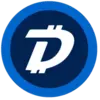Notice: Due to the hack in February and other recent issues XeggeX is shutting down and filing for insolvency. More information and legal contacts will be provided soon.
Max Supply: 0
Circulation: 17,781,227,175.83
Market Cap: $132,363,455
Listing Date:
2022-04-22, 07:13:01
Network:
DigiByte Main Chain
Asset Type:
Coin
Links
Social
Primary Markets (0 active)
Total Market Volume: ~$0
Liquidity Pools (0 Active)
Total Pool Liquidity: ~$0
| Market | Volume |
|---|
Hot Wallets
Deposit
Block #21686127 @ 1.56 min ago
Balance: 0.00000000
Updated: 1.38 min ago
Withdraw
Block #21686127 @ 1.56 min ago
Balance: 60150.06271482
Updated: 1.38 min ago
Highlighted Assets
Market Cap: $3.06K $0.000855
Market Cap: $533K $0.00766
Top Volumes
Biggest Gains
About DigiByte
DigiByte (DGB) is a digital asset primarily focused on cybersecurity, IoT (Internet of Things) and decentralized currency. Jared Tate, a programmer and entrepreneur, launched the DigiByte blockchain on January 10th, 2014.Although DigiByte is based on the Bitcoin protocol, a number of adjustments have been made in the code which make DigiByte unique. For example, DigitByte allows for quicker confirmation speeds (15-second block time versus Bitcoin’s 10 minute block time). In addition, DigiByte uses five secure and advanced cryptographic mining algorithms (SHA256, Scrypt, Odocrypt, Skein & Qubit) instead of one. Using multiple mining algorithms prevents the centralization of mining compared to single algorithm blockchains.Another difference is DigiByte’s implementation of DigiShield. DigiShield was activated in February of 2014 and allows for the DigiByte blockchain to protect against multi-pools that mine large numbers of DigiByte at a low difficulty setting. To achieve this, DigiShield recalculates block difficulty after each new block is mined. This allows for a faster correction when a multi-pool mining operation begins or ceases contributing to DigiByte (rather than recalculating once every two weeks as is the case with Bitcoin). Since first being implemented with DigiByte, DigiShield has been added into over 25 other cryptocurrency blockchains such as Dogecoin, Zcash, AuroraCoin, and others.DigiByte has never held an Initial Coin Offering (ICO) and is not controlled by a private company. Committed to decentralization, the project is led by the DigiByte Foundation which is a decentralized volunteer-based community dedicated to supporting the DigiByte global blockchain through the three pillars of 1) education, 2) outreach, and 3) development.In March of 2019, DigiAssets was announced. DigiAssets is a scalable secondary layer secured on top of the DigiByte blockchain. It allows for the decentralized issuance of assets, tokens, smart contracts, digital identity, and much more.There are three layers to the DigiByte blockchain. The first is the Applications layer and functions like an app store where decentralized apps (Dapps) and smart contracts can be built. Digital assets can also be created on this layer using the DigiAssets protocol. The second layer is called the Public Ledger layer which is what incentives the security of the DigiByte platform. The third layer is the Global Network layer which provides communication and operating procedures for all the decentralized nodes (servers, computers, or mobile phones) connected to the DigiByte network.DigiByte is one of the first projects to implement SegWit (short for Segregated Witness) on their blockchain. SegWit is a protocol upgrade that changes the way data is stored.According to the website, a total of 21 billion DigiByte will be created within 21 years (2014 - 2035).
Stable Connection



